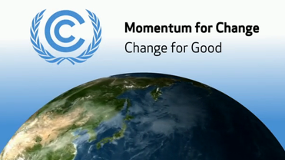The Regional Invasive Species Council and partners meet on Guam
- Details
- Category: News
- Published: Sunday, 23 December 2018 23:43
- Written by Bill Jaynes
- Hits: 1003
James Stanford
Regional Invasive Species Coordinator
Micronesia Islands Forum Secretariat
9 October 2018
Palau—The Micronesia Chief Executives Regional Invasive Species Council (RISC) met on Guam during September for a week-long workshop with partners to improve regional efforts towards addressing impacts and reducing risks from invasive species. Invasive species is the name given to non-native organisms which establish and cause significant impacts, or which can potentially establish and cause impacts. The jurisdictions of Micronesia have numerous established invasive species and many others which threaten to invade. The council and its partners work on behalf of the Micronesia leadership which established the council in 2005 to reduce impacts to the region and its communities from invasive species both through reducing risk of new invasive species arriving but also through improved management of those already established.
Invasive species impacts are cross cutting, negatively impacting all sectors. Addressing impacts and risks from invasive species is of the highest priority and is consider a top-level concern along with climate change. Some of the most concerning invasive species for Micronesia include:
- • Brown Treesnake established on Guam
- • Coconut Rhinoceros Beetle established in Guam, Palau, Hawaii and elsewhere
- • Little Fire Ant established in Guam, Yap and Hawaii
- • Black Sock Disease established on many islands already
- • Red Imported Fire Ant established in the US Mainland, China, Australia and the port of Osaka Japan
These and many other invasive species threatening the region or already impacting some islands and threatening others with invasion and establishment. If these and other invasive species do become established they will cause extensive impacts to natural resources and biodiversity, climate resilience, culture and way of life, health, economics and security. We know this because these and other invasive species are causing significant impacts to areas and islands where they are already established.
To reduce risks and impacts from invasive species, 38 members and supporters of the council spent the week advancing priorities with a focus on: addressing climate change risk reduction, addressing invasive species within protected areas, improving inspection processes at the regional shipping hub on Guam, addressing regional concerns with Coconut Rhinoceros Beetles and invasive ants, and many other topics.
The RISC and its partners will continue to move these and other efforts forward and report out on successes and general activities through various mechanisms including updating of the Regional Biosecurity Plan for Micronesia and Hawaii strategic actions, reporting to leadership at the 24th Micronesia Islands Forum in 2019 and various partnering and outreach initiatives such as newsletters, websites and through the Honolulu Challenge on Invasive Species.
In addition, the council would also like to remind residents and visitors to Micronesia that reducing risk and impacts from invasive species is both a regional and local community effort that requires everyone to participate by ensuring that they are not accidentally transporting pest organisms and that they rapidly report to local authorities any potential new pests encountered, enabling authorities to engage and remove pests before they become firmly established.
In Micronesia, we are all biosecurity officers and we all need to do our part in protecting our islands, our homes and communities from invasive species.






